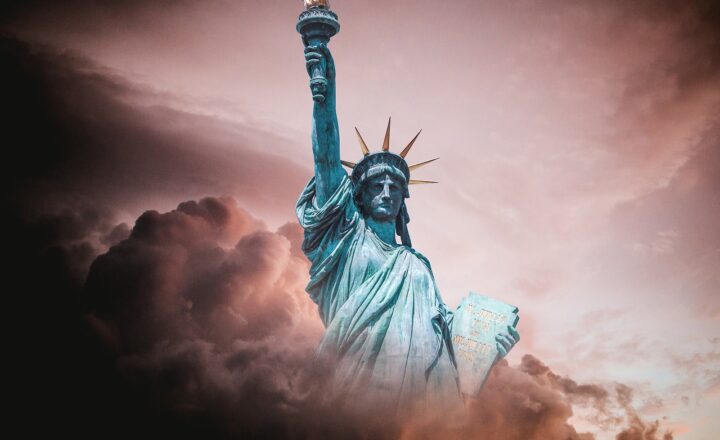The History of Political Propaganda and Its Lasting Impact
November 16, 2024

Political propaganda is an art form and weapon used throughout history to influence public opinion and promote specific political agendas. From ancient civilizations to the digital age, the evolution of propaganda reflects changes in media, technology, and societal values.
The power of propaganda lies in its ability to shape narratives, mobilize support, and suppress dissent. This article explores the history of political propaganda, its techniques, and its profound impact on societies around the globe.
1. What is Political Propaganda?
Political propaganda involves the dissemination of information—often biased or misleading—intended to promote a particular political cause or viewpoint. This form of communication seeks to influence public opinion, mobilize support, and demoralize opposition.
Some of the most common techniques used in political propaganda include:
- Emotional Appeal: Using fear, hope, or other strong emotions to sway public sentiment.
- Disinformation: Spreading false or misleading information to confuse or mislead the public.
- Simplification: Reducing complex issues to simple slogans that are easy to remember and repeat.
- Repetition: Constantly reiterating messages to reinforce certain ideas and beliefs.
Understanding the essence of propaganda is crucial in analyzing its effectiveness and potential consequences on governance and society.
2. Ancient Roots of Political Propaganda
The history of political propaganda dates back to ancient civilizations. Egyptian pharaohs frequently used public inscriptions and monuments to promote their rule and achievements. Greek orators like Demosthenes utilized rhetoric to persuade citizens during the rise of democracy in Athens.
For example, the propaganda of the Roman Empire extended through architecture and art, showcasing emperors in heroic poses to solidify their image and narrative.
During the Middle Ages, the Catholic Church relied on propaganda to spread its influence across Europe. Religious imagery and art served to promote church doctrines, illustrating the divine right and power of monarchs endorsed by the Church.
3. The Birth of Modern Propaganda
The modern era of political propaganda began in the 19th century with the advent of mass communication. Industrialization and the rise of print media transformed how political messages were spread.
During the American Civil War, both the Union and Confederate sides used newspapers and pamphlets to sway public opinion about the war, showcasing the power of print as a propaganda tool.
World War I marked a significant turning point, as governments recognized the value of propaganda in mobilizing public support and controlling narratives. The U.S. Committee on Public Information, led by George Creel, produced posters, films, and pamphlets to promote the war effort, shaping public sentiment through calculated messaging.
4. Propaganda Techniques: Lessons from History
History has illuminated various propaganda techniques that have been employed with varying degrees of success. Some notable examples include:
– **Images and Symbols:** Iconic visuals have been used to evoke emotional responses, from Uncle Sam appealing for enlistment to Soviet propaganda featuring the hammer and sickle depicting the unity of workers.
– **Famous Slogans:** Catchy phrases, such as “Make America Great Again,” encapsulate complex ideas in simple expressions that resonate with the public.
– **Censorship:** Governments have often censored opposing views to control the narrative. For example, in the lead-up to World War II, Nazi Germany used censorship to limit information and promote its ideology.
By examining these techniques throughout history, we can better understand how contemporary propaganda continues to evolve and adapt.
5. The Digital Age: Propaganda in the 21st Century
The rise of the internet and social media has transformed how propaganda is disseminated. In the age of information, the speed at which information spreads can dramatically influence political landscapes.
Government actors, organizations, and individuals have exploited social media platforms like Facebook, Twitter, and Instagram to manipulate public opinion, often using targeted advertising and algorithm-driven content.
Infamous examples include the misinformation campaign during the 2016 U.S. Presidential Election and the Cambridge Analytica scandal, which demonstrated how data manipulation could create echo chambers and amplify propaganda messages.
This digital landscape raises ethical considerations, particularly regarding fake news, filter bubbles, and emotional manipulation, making critical media literacy essential in navigating modern propaganda.
6. The Lasting Impact of Political Propaganda
The implications of political propaganda are extensive and can lead to profound societal changes:
– **Polarization:** Propaganda can intensify political divisions, leading to polarized societies that are less willing to engage in constructive dialogue.
– **Public Trust:** Continuous exposure to propaganda can erode trust in institutions, fostering skepticism toward media, government, and other institutions.
– **Civic Engagement:** While propaganda can mobilize support for causes, it can also lead to apathy when citizens feel overwhelmed by misinformation and manipulation.
Understanding these impacts emphasizes the importance of discerning credible sources and critically evaluating information in today’s rapidly changing media landscape.
Conclusion
Political propaganda is deeply woven into the fabric of history, evolving alongside technology and media. Analyzing its development and techniques highlights both its powerful influence and potential for manipulation.
As we navigate an era of digital information overload, discerning fact from fiction is paramount. By utilizing the lessons from history, we can cultivate media literacy and engage with political discourse critically, ensuring that we are informed citizens making educated choices in the democratic process.
The legacy of propaganda reminds us that while information is accessible, it is our responsibility to seek truth amid the noise.







